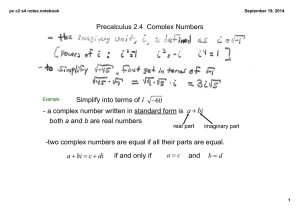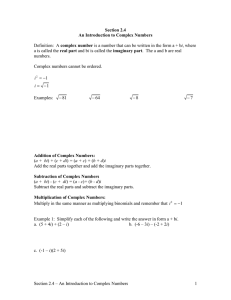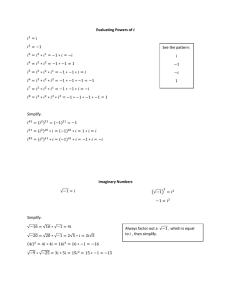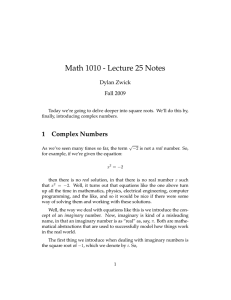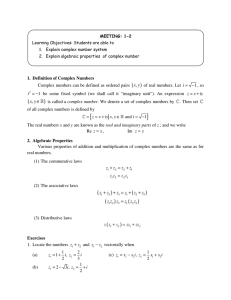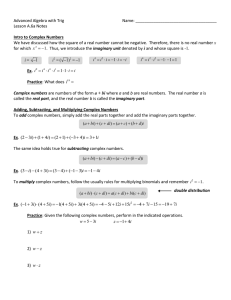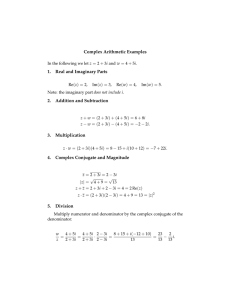Complex Number System Arithmetic
advertisement
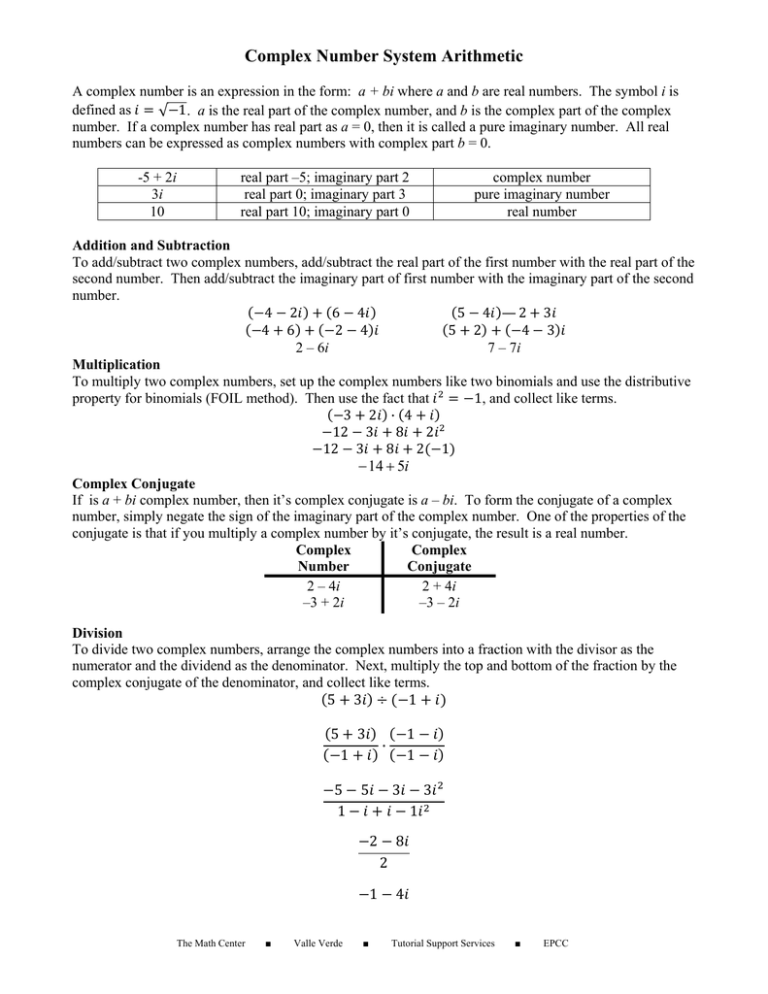
Complex Number System Arithmetic A complex number is an expression in the form: a + bi where a and b are real numbers. The symbol i is defined as √ 1. a is the real part of the complex number, and b is the complex part of the complex number. If a complex number has real part as a = 0, then it is called a pure imaginary number. All real numbers can be expressed as complex numbers with complex part b = 0. -5 + 2i 3i 10 real part –5; imaginary part 2 real part 0; imaginary part 3 real part 10; imaginary part 0 complex number pure imaginary number real number Addition and Subtraction To add/subtract two complex numbers, add/subtract the real part of the first number with the real part of the second number. Then add/subtract the imaginary part of first number with the imaginary part of the second number. 4 2 6 4 5 4 —2 3 4 6 2 4 5 2 4 3 2 – 6i 7 – 7i Multiplication To multiply two complex numbers, set up the complex numbers like two binomials and use the distributive property for binomials (FOIL method). Then use the fact that 1, and collect like terms. 3 2 · 4 12 3 8 2 12 3 8 2 1 − 14 + 5i Complex Conjugate If is a + bi complex number, then it’s complex conjugate is a – bi. To form the conjugate of a complex number, simply negate the sign of the imaginary part of the complex number. One of the properties of the conjugate is that if you multiply a complex number by it’s conjugate, the result is a real number. Complex Complex Number Conjugate 2 – 4i 2 + 4i –3 + 2i –3 – 2i Division To divide two complex numbers, arrange the complex numbers into a fraction with the divisor as the numerator and the dividend as the denominator. Next, multiply the top and bottom of the fraction by the complex conjugate of the denominator, and collect like terms. 5 3 1 5 3 1 5 1 1 1 · 5 3 3 1 2 8 2 1 The Math Center ■ Valle Verde ■ 4 Tutorial Support Services ■ EPCC

